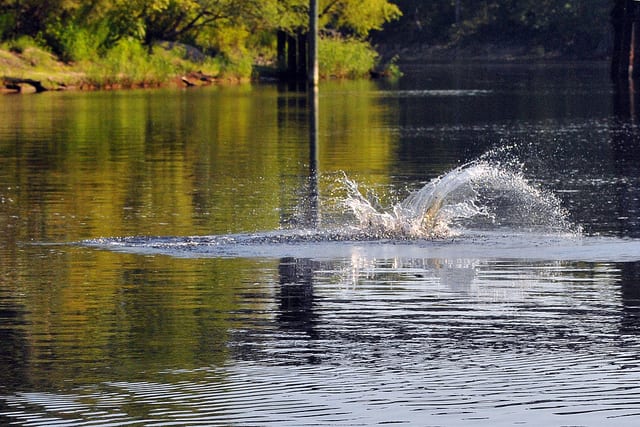They’re back; Sturgeon Returning to Florida’s Suwannee River
OutdoorHub Reporters 04.09.12

They’re back. Gulf sturgeon have begun their annual migration back into the Suwannee River.
Florida Fish and Wildlife Conservation Commission (FWC) officers have reported seeing the fish jump already this year.
People have been injured in accidental collisions with the jumping sturgeon. In 2011, six boaters were hurt and 11 encounters with sturgeon were reported.
“Last season, we had quite a few people hurt, some seriously,” said Maj. Roy Brown, regional law enforcement commander for the FWC’s North Central Region, based in Lake City. “Just one person getting hurt is too many. We want people to be aware the Gulf sturgeon are returning to the Suwannee, and the risk of injury to boaters does exist.”
In 2006, FWC officials began working on a public awareness campaign to alert boaters to the risks of jumping sturgeon.
“We posted signs at each boat ramp along the Suwannee, explaining the risk of impacts with these fish,” Brown said. “Our officers will be on water patrol during this period and into the summer months in a continued effort to educate boaters about these jumping fish.”
What’s the best course of action for avoiding a collision?
“We recommend boaters reduce their speed to reduce the risk of impact and to give people more time to react if they do encounter a jumping sturgeon,” Brown said. “The FWC also recommends that all boaters wear their life jackets.”
The Suwannee River appears to support the largest viable population of Gulf sturgeon. Biologists estimate the annual population at 10,000-14,000 fish, averaging approximately 40 pounds each. Adult fish spend eight to nine months each year in the river spawning and three to four of the coolest months in Gulf waters.
Biologists are unsure why sturgeon jump. Theories include that the fish jump to communicate or as a dominance display.
“I have seen these collisions referred to as ‘attacks.’ However, these fish are in no way attacking when they jump. They are simply doing what they have been doing for millions of years: jumping. They aren’t targeting the boaters,” Brown said.
Gulf sturgeon can get quite big, exceeding 8 feet and 200 pounds.
“They have five rows of rock-hard scutes along their sides, back and belly. When sturgeon and boaters collide, the results can be devastating,” Brown said.
State and federal laws protect sturgeon, just like bald eagles, panthers and sea turtles. It is illegal to harvest Gulf sturgeon.
To report sturgeon collisions, call 888-404-FWCC (3922).
“If anyone is involved in an incident with a jumping sturgeon, please report it to the FWC. With the data received, we can get a better overall view of where the fish are jumping and get the word out to the public,” Brown said.
For more information about the Gulf sturgeon, go to MyFWC.com/Research and click on “Saltwater.”

